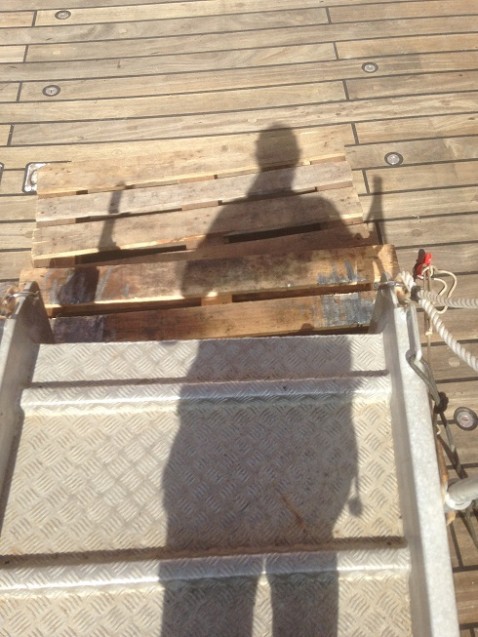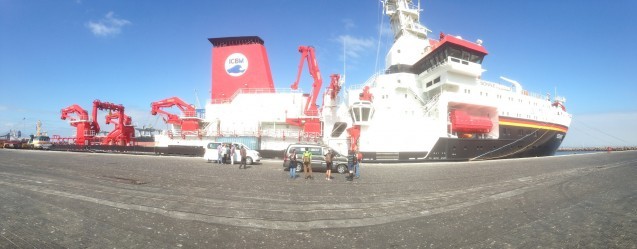Setting Sail? Plan for the Unexpected
In the weeks before departing for my first scientific cruise, everyone I knew who had ever been to sea gave me some form of the same advice: Nothing ever works the way you expect it to work at sea.

By Frankie Pavia
Days -3 to 1, The delay: In the weeks before departing for my first scientific cruise, everyone I knew who had ever been to sea gave me some form of the same advice:
Nothing ever works the way you expect it to work at sea. Four days ago, their words lingered heavily in my head as I groggily walked to board my final connection to Antofagasta, Chile. I wondered to myself, “How can the unexpected happen when I have no idea what to expect in the first place?”
I am typing from my cabin aboard the FS Sonne, a German research vessel scheduled to depart on a scientific sampling cruise between Antofagasta, Chile, and Wellington, New Zealand, crossing the entire South Pacific, between Dec. 17 and Jan. 28. Fellow Lamont-Doherty graduate student Sebastian Vivancos and I will be measuring a variety of chemical tracers in the ocean for our Ph.D. theses on the cruise. The South Pacific is a bit of a unicorn for oceanographers—due to its remoteness, cruises rarely go there, making it hard to get samples. We were presented with the opportunity to collect seawater aboard the FS Sonne as part of the UltraPac program and jumped at the chance.
We arrived three days ago to load the ship, with the help our lab’s research technician and scientific cruise guru, Marty Fleisher. The expectation was that we would stay in a nearby hotel on the 14th and 15th, set up the ship, and on the 16th we would have everything ready to go, stay the night aboard the Sonne, and depart the next morning.
The answer to my first question was answered almost immediately. One of the bags filled with crucial last-minute additions to our sampling equipment was lost in transit by the airline company. After a massive series of calls emails, we had a tracking number, but no idea if the bag would arrive by the morning of the 17th when we would depart. Some of the things we could buy at a local hardware store, but some of it was likely too specialized. I, for one, have never seen a hardware store that sells pizza slicers made of ceramic.

Once again the unexpected struck. Upon meeting with the other scientists on the cruise, we quickly learned that everyone was missing their supplies. Everyone else’s supplies were scheduled to arrive on the 18th—the day after the cruise was scheduled to depart. Then the bombshell: spare parts for the ship were still at least four days away from arriving, and we couldn’t depart until we had them.
The presence of the unexpected was forcing me to realize what my expectations were in the first place. I had been incredibly anxious leading up to the cruise about leaving my life behind for two months while I went to sea with limited connection to the outside world. I was hoping that the solitude of the ocean and the engagement of constant scientific work would buffer that anxiety. The going is slow. There’s not much work to do until the parts get here and we depart. I’m living on the ship, but my journey hasn’t yet begun.
The best-case scenario is that we leave on Sunday. No one has said anything about the worst-case scenario yet, but there have been rumblings of a Christmas in Chile. That leaves somewhere between three more days and seven more days of the uncertain, and the unexpected grasping my life’s puppet strings, postponing the adventure.
Frankie Pavia is a second-year graduate student studying oceanography and geochemistry at Lamont-Doherty Earth Observatory.
